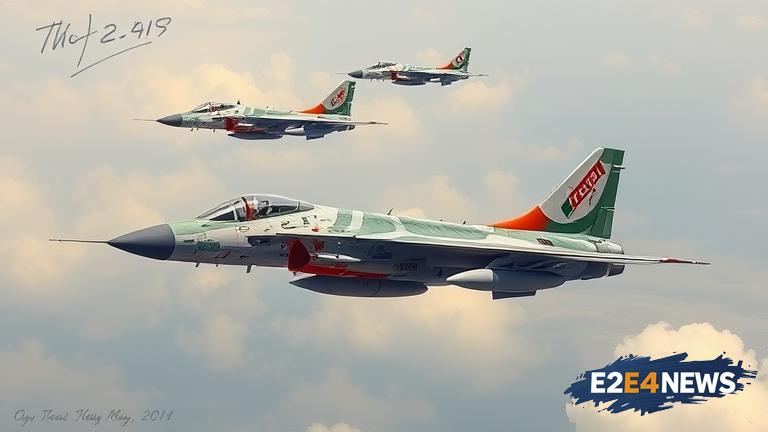The Indian Air Force (IAF) has a rich history of embracing cutting-edge technology to bolster its defense capabilities. One of the most significant milestones in this journey was the introduction of the MiG fighter jets over six decades ago. The MiG, short for Mikoyan-Gurevich, is a Soviet-designed aircraft that has been a mainstay of the IAF’s fleet for many years. The first MiG jets were inducted into the IAF in the early 1960s, marking the beginning of a long and fruitful partnership between India and the Soviet Union. The MiG-21, in particular, was a game-changer for the IAF, offering unparalleled speed, agility, and firepower. The aircraft’s exceptional performance and relatively low maintenance costs made it an attractive option for the IAF, which was looking to modernize its fleet. Over the years, the MiG-21 has undergone numerous upgrades and modifications, ensuring that it remains a potent force in the IAF’s arsenal. The MiG-25, another variant of the aircraft, was also inducted into the IAF in the 1980s, providing the country with a strategic reconnaissance capability. The MiG-27, a ground-attack variant, has also been used by the IAF to great effect in various combat operations. The introduction of the MiG-29, a multi-role fighter, has further enhanced the IAF’s capabilities, allowing it to undertake a wide range of missions, from air-to-air combat to ground-attack sorties. The MiG-35, the latest variant of the aircraft, is a fifth-generation fighter that boasts advanced avionics, stealth capabilities, and supermaneuverability. The IAF’s experience with the MiG has not been without its challenges, however. The aircraft has been involved in several accidents over the years, resulting in the loss of life and equipment. Despite these setbacks, the MiG remains a vital component of the IAF’s fleet, with many of its variants still in service. The IAF’s relationship with Russia, the manufacturer of the MiG, has also been a subject of interest, with the two countries cooperating on various defense projects. The MiG has played a significant role in several conflicts, including the Indo-Pakistani War of 1971 and the Kargil War. The aircraft’s performance in these conflicts has been impressive, with the MiG-21, in particular, earning a reputation as a formidable opponent. The IAF’s maintenance and upgrade of the MiG fleet have been carried out with the help of Russian technicians and engineers, ensuring that the aircraft remain airworthy and effective. The MiG has also been used for training purposes, with the IAF operating several training squadrons equipped with the aircraft. The introduction of the MiG has also had a significant impact on the IAF’s doctrine and tactics, with the aircraft’s capabilities influencing the development of new strategies and operational plans. In conclusion, the MiG fighter jets have been a cornerstone of the IAF for over six decades, providing the country with a potent airpower capability. The aircraft’s performance, versatility, and relatively low maintenance costs have made it an attractive option for the IAF, which continues to operate several variants of the MiG. As the IAF looks to the future, it is likely that the MiG will remain a vital component of its fleet, with ongoing upgrades and modernization ensuring that the aircraft remains effective and relevant.
